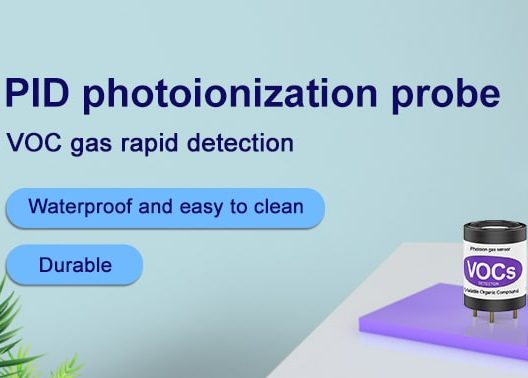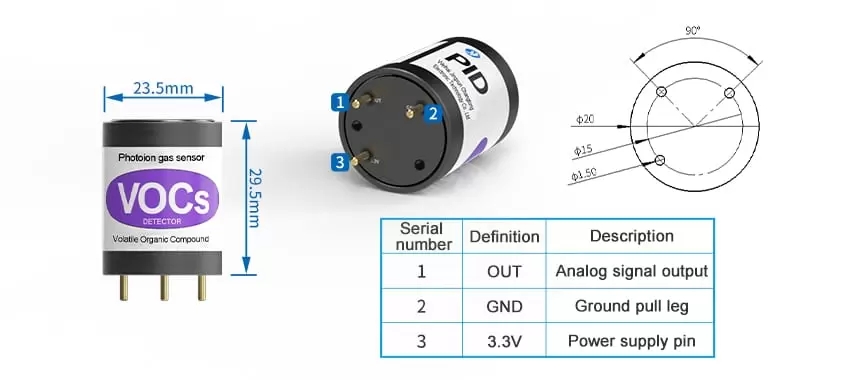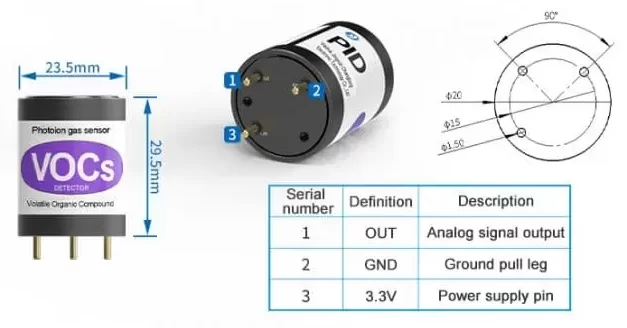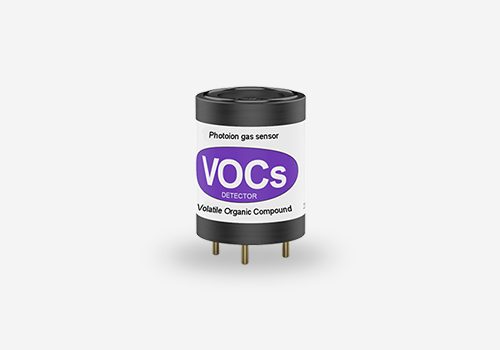Learn about PID Sensor
The pid sensor realizes rapid detection of VOC gas, is waterproof, easy to clean, durable, multi-range selection, and accurate measurement. PID module is high sensitive and quick react. It can help you alarm the VOC at the first time and make sure your health.
Photoionization (PID) sensors have become a cornerstone technology in environmental monitoring, safety, and industrial process control applications due to their exceptional sensitivity and accuracy in detecting VOCs. These sensors utilize the photoionization principle to quantify VOC concentrations, providing real-time data that is vital for ensuring health, safety, and regulatory compliance across various sectors. This article delves into the fundamental principles of PID sensors, their widespread applications, and future advancements.
Fundamentals of PID sensor Technology

Photoionization sensor operate by exposing a sample gas to ultraviolet (UV) light. When a molecule absorbs enough energy from this light, it becomes ionized, producing an electrical current proportional to the concentration of ionizable molecules present. PIDs are particularly sensitive to a broad range of VOCs with ionization potentials below the energy of the UV lamp. This characteristic allows them to detect even trace levels of pollutants, making them indispensable tools in air quality management.
Environmental Monitoring Application

In the realm of environmental monitoring, PID sensors are used extensively in identifying and quantifying hazardous VOC emissions from factories, refineries, landfills, and other sources. They play a crucial role in assessing air pollution levels, supporting decision-making for remediation strategies, and ensuring adherence to stringent emission regulations. Additionally, PIDs are employed during emergency response scenarios, such as chemical spills or fires, where rapid detection of toxic gases can be lifesaving.
Industrial Process Control and Safety
Within industrial settings, PID sensors contribute significantly to process control and worker safety. They help monitor and maintain acceptable VOC levels during production processes, preventing product contamination and equipment corrosion. Moreover, they serve as essential safety devices, alerting workers to dangerous leaks before they escalate into critical incidents. Industries like petrochemicals, semiconductor manufacturing, and pharmaceuticals rely heavily on PID sensors to safeguard personnel and assets.

Advancements and Innovations
Technological advancements continue to enhance PID sensor performance, including improvements in sensitivity, selectivity, and resistance to interferences. Miniaturization has enabled portable and wearable PID detectors, allowing for more flexible and convenient monitoring. Integration with IoT platforms and AI algorithms further boosts functionality, facilitating remote sensing, predictive maintenance, and real-time analytics. Future trends may include novel materials for enhanced durability, extended detection ranges, and multi-gas detection capabilities.
Challenges and Opportunities
Despite their numerous advantages, PID sensors face challenges such as saturation at high concentrations, susceptibility to water vapor interference, and the need for regular calibration. However, ongoing research and development efforts are addressing these issues, promising improved robustness and reliability. As industries strive for greater sustainability and cleaner operations, the demand for advanced PID sensors will only increase. This presents opportunities not just for instrument manufacturers but also for researchers and policymakers working towards a safer and healthier environment.
Conclusion
In conclusion, PID sensors stand as a pivotal technology in the pursuit of safer workplaces, cleaner environments, and better-managed industrial processes. Their ability to accurately measure and track VOC concentrations plays a critical role in mitigating risks, maintaining regulatory compliance, and fostering sustainable practices. As technology continues to evolve, we can expect PID sensors to become even more versatile, efficient, and integral to our collective effort in protecting human health and preserving our planet’s natural resources.
